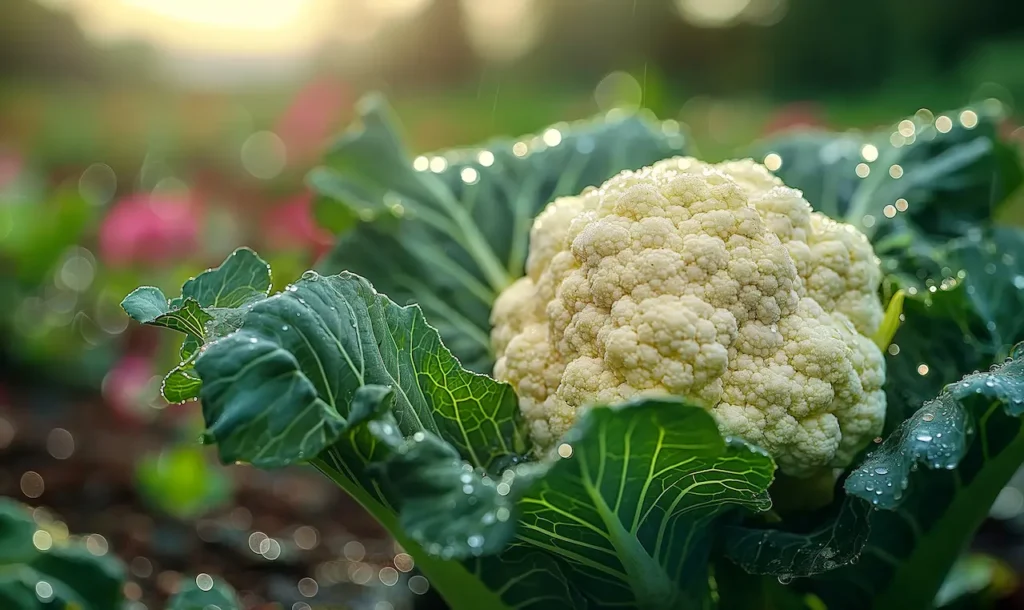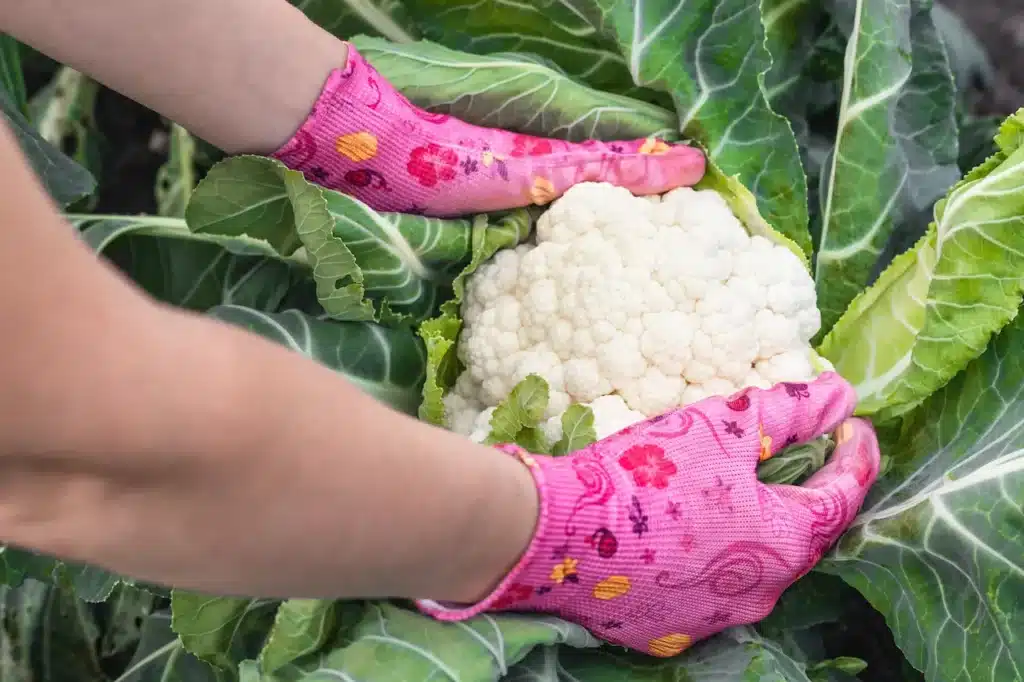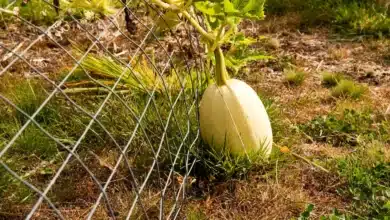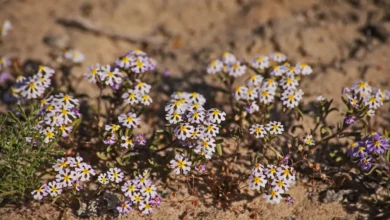Cauliflower Growing Guide
Cauliflower Growing Guide: Comprehensive Guide for Success
Cauliflower can be used to elevate any dish. It is highly nutritious, versatile and delicious. Cauliflower can be used for a wide range of dishes, from soups and salads to pizza crusts and roasted dishes. Cauliflower is a rewarding experience for any gardener, whether you are a pro or a beginner. You can harvest a bounty of crisp, mildly flavored heads with the right conditions, patience and care. This guide will teach you how to grow cauliflower.

The Suggested Variety to Grow
The first step in growing cauliflower is to choose the right variety. Cauliflowers are classified according to their seasonal and growing requirements. By selecting the right variety, you will be able to harvest your cauliflower at the appropriate time depending on the climate. Here are a few popular varieties:
Summer Varieties
Summer cauliflowers are very fast growing, and typically take 4-5 months to grow from seedlings to harvest. These varieties are perfect for those who want a faster turnaround and smaller heads. It is best to plant summer cauliflower in early spring, so that it matures in the cooler summer days. Bolting (when the plant flowers prematurely and produces unedible heads), can occur in high temperatures.
Mini-Cauliflowers
Mini-cauliflowers are perfect for smaller spaces. They mature in 3 months, and they produce smaller heads. They are perfect for small gardens or containers, as they can be harvested more quickly.
Autumn Varieties
These varieties are usually sown mid- to late spring and mature during the cool autumn weather. These varieties are ideal for gardeners looking to harvest their crops after the summer heat is over. These plants are more resistant to bolting and therefore a better choice for cooler climates.
Winter Varieties
Winter varieties grow slowly, maturing in 6 months or longer. These varieties are ideal for areas with mild winters, as they can often tolerate cold temperatures. These varieties produce dense, large heads that require a wide space to grow.
Cauliflowers are available in a wide variety of varieties.
1. Snowball
Snowball is known for its white, smooth heads and great flavor. It is ready to harvest in 60 days, and can be planted both in spring and fall.
Snowball is a mild and tender fruit that can be eaten fresh or cooked.
2. Graffiti
Graffiti, a purple variety of cauliflower with vibrant color, is perfect for adding some colour to your garden. It is ready in 70 days, and its flavor is slightly nutty.
Tip: Purple cauliflower is a healthy choice because it’s rich in vitamins and antioxidants.
3. Sunset
Sunset is a unique cauliflower variety with its orange-colored heads. It adds color, sweetness and flavor to any dish. It is high in beta-carotene and can be harvested within 65 days.
Tip: Sunset is great for roasting, and to add color to salads or other dishes.
Cauliflower Growing Conditions
Cauliflower thrives in cool weather conditions. You need to provide the right conditions for growing cauliflower to avoid it bolting prematurely or developing a poor head.
Temperature and Weather
Cauliflower thrives in temperatures between 60degF and 70degF (15degC and 21degC). Planting your cauliflower in the summer can lead to the plant bolting (flowering prematurely) and producing loose, low-quality heads.
Tip: If you live in an area with hot summers and want to protect your plants, use shade cloth or any other protective measures. This is especially important during the hottest times of the day.
Heat zones and Frost Tolerance
Although cauliflower can tolerate a light frost, prolonged exposure below 25degF can cause damage to the plants. In climates with colder temperatures, cauliflower is best grown in the spring or fall. In warmer climates, it is important to choose varieties that grow quickly and mature before the summer heat.
Tip: Use row covers to protect your young plants against unexpected frosts, whether it’s early spring or late autumn. They also extend the growing period for a larger harvest window.
Soil preparation and planting
Soil Requirements
Cauliflower grows best in soils that are rich, well-drained and rich in organic material. It’s best to test the soil pH before you plant cauliflower. The ideal range is between 6.0-7.0. A well-draining, nutrient-rich soil can prevent root rot. This is bad for your crop.
Before planting, amend your soil with compost or manure that has been well-rotted. This will improve the soil structure and provide vital nutrients for plants.

Planting Depths and Spacing
Cauliflower seed should be planted about half an inch deep. Plant seeds in pots or seed trays 4-6 weeks prior to your last anticipated frost date if you are starting them indoors. Once the seedlings have two or three true leaves, and the soil temperature outside has warmed up, you can transplant them into your garden.
Tip: When transplanting seedlings, bury them up to the first true leaf to promote strong roots. To ensure healthy growth, it is important to maintain the proper spacing. Plants should be spaced 18-24 inches apart, in rows of 30 inches. For larger varieties, aim for a space of 28 inches between plants. Mini varieties can be planted closer together, at 6 inches.
Watering and Fertilizing
Watering Tip
Growing healthy cauliflower requires consistent moisture. At least once a month, water deeply to keep the soil evenly moist without becoming soggy. Mulching can help to retain moisture, reducing the frequency of watering. Avoid overhead watering as it can cause fungal disease.
Tip: Use a drip irrigation system or soaker hose to water the cauliflower plants at the base. This will reduce the risk of wet leaves, which can cause diseases such as downy mildew.
Fertilization Requirements
Cauliflower requires regular fertilization because it is a heavy feeder. After your cauliflower plants have established themselves, you can side-dress with nitrogen-rich fertilizer in order to encourage their growth. Avoid fertilizing too much nitrogen in the later part of the season. This can cause loose heads and make your plants more susceptible to pests.
Tip: Use a balanced fertiliser like Nurseries’ Vegetable, Flowers, & Garden Fertilizer 12-16-12 during the growing period. Switch to a higher potassium fertilizer when the plant begins to form heads. This will help the plants produce strong and dense curds.
Harvesting Cauliflower
Harvest Timing
Cauliflower heads are ready for harvesting when they are compact and firm. They should be 6-8 inches wide, depending on the variety. When the heads and curds remain tightly formed, it is best to harvest. The head will begin to separate and turn yellow if it begins to separate.
Tip: Gently squeeze your head. It should be firm and solid. It’s best to harvest it before it starts to loosen.
Harvest Techniques
Use a sharp knife to remove the cauliflower head, and leave a few outer leaves intact. This will protect the cauliflower when it is stored. After harvesting the cauliflower, it should be stored in a refrigerator where it can last for up to two weeks.
Tip: If you have an excess of cauliflower, blanch it and freeze it to store for a long time. This will preserve its nutritional value and flavor for several months.
After-Harvest Care and Storing
Store cauliflower in your refrigerator’s crisper drawer after harvesting. If you can’t use it within two weeks, blanch and freeze the cauliflower. Cut the cauliflower into florets and blanch it in boiling water for three minutes. Then, cool immediately in ice-cold water before freezing.

Conclusion
Gardeners of any level can enjoy growing cauliflower. You can have fresh cauliflower all year round in your kitchen if you pay attention to the soil, timing and care of the plants. Cauliflower is a versatile veggie that can be incorporated into many dishes.
Wildwood Express is committed to offering gardeners high-quality gardening tools and seeds to help them grow. Let us help you with your gardening journey by exploring our variety of cauliflowers.
- Are you ready to start growing? Follow Our Cauliflower Checklist!
- Select The Right Variety Choose the best variety for your climate and growing seasons.
- For best results, plant cauliflower when the weather is cool.
- Prepare seed trays or pots: Use an easy-to-drain seed mixture.
- Plant seeds about 2 inches apart, 1/4 inch deep.
- Provide ideal growing conditions: Maintain soil temperature between 65-70degF, and ensure sufficient light and moisture.
- Outdoor Soil Prepared: Add compost to your soil and test pH.
- Transplanting seedlings: Harden the seedlings off before transplanting.
- Mulch to retain moisture.
- Blanching Cover heads with white curds.
- Harvest cauliflower when the heads are compact and firm.
- Post-Harvest Care Store in the refrigerator orfreeze for later use.
- Enjoy your harvest and happy gardening!




